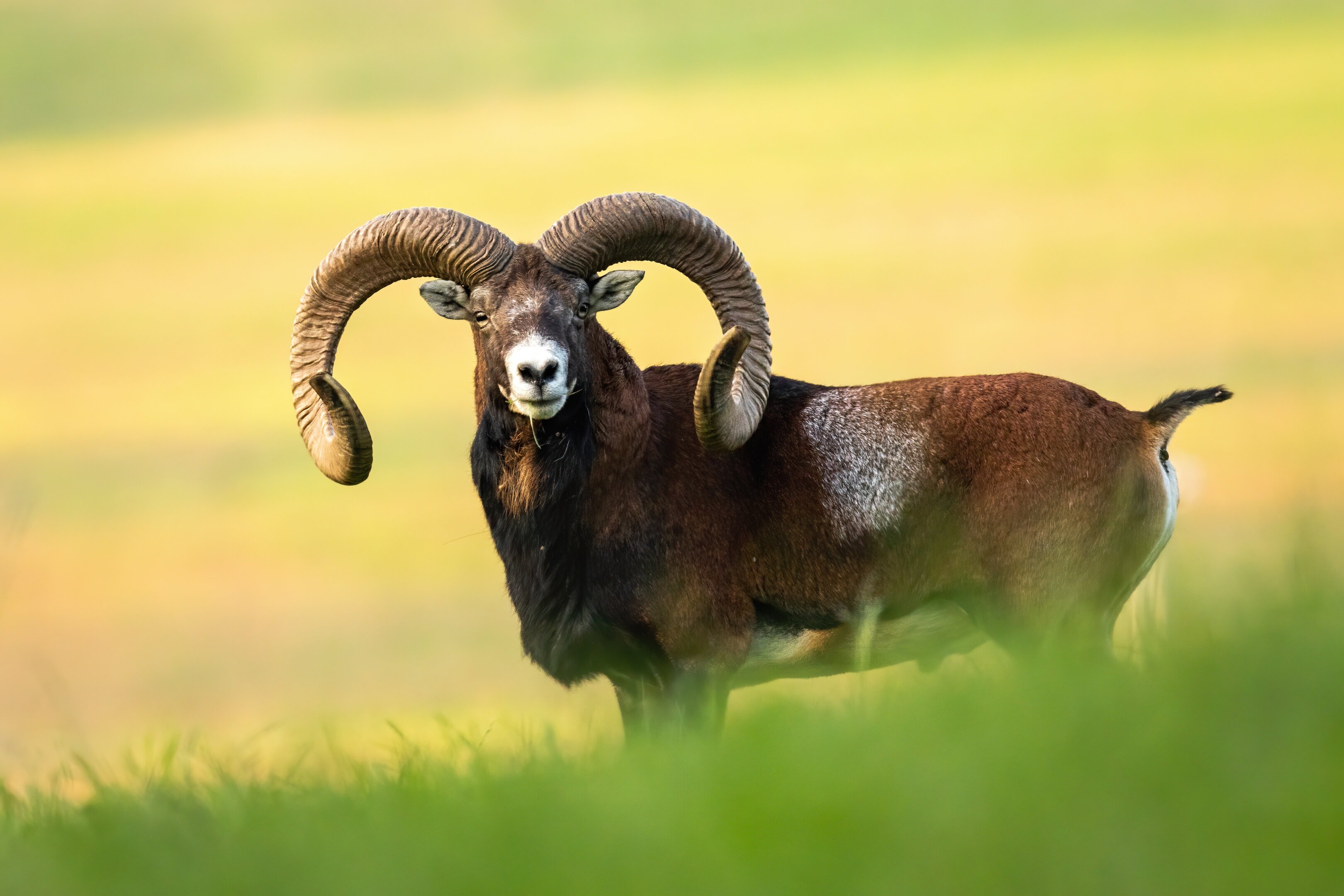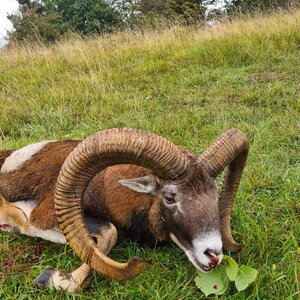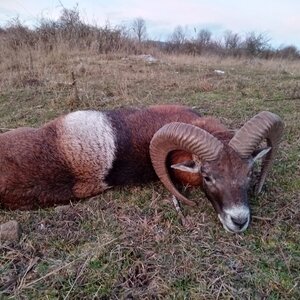
Hunts

Mouflon in rut
The rutting season of mouflons begins at the end of October and lasts until December.
Older male mouflons attempt to establish dominance through fierce battles. They fight by ramming into each other from a distance of about 20 meters and try to push each other away. The clashes of their horns can be heard from a great distance. The fight ends when the weaker and exhausted mouflon leaves the herd.
Mouflons have excellent vision and a keen sense of smell. They are very skittish and vigilant, agile jumpers, and fast runners. When moving in the terrain, the herd can be quite noisy, and in case of danger, mouflons emit a warning whistle that sounds similar to sneezing. Subsequently, the herd flees, stops after running a short distance, and sniffs the air again.
Older mouflons are accustomed to forming groups and live in separate small herds of 2 to 5 individuals.
Luring
Mouflons can be lured using a call that imitates the bleating of a rutting female mouflon.
To lure successfully, one must know the right places for stands and the animal's habitat during the rut, master the art of concealment, understand wind patterns, be familiar with the behavior of the animals, and, most importantly, be able to perfectly imitate the animal's call.
Hunting period
October 20th - December 5th
The peak of mouflon rutting season occurs on November 14th.
Biology
Mouflons thrive best on rocky and stony terrain where they can effectively sharpen their constantly growing horns. They inhabit mixed and deciduous forests interspersed with open areas for grazing. They are often found in coniferous forests but have to venture out into fields for food. They are active during the day and enjoy basking in the sun on meadows and clearings.
Their diet is diverse and changes with the seasons. In spring, they graze on emerging vegetation, in summer they prefer the leafy parts of plants. In autumn, mouflons intensively collect seeds and fruits from trees, shrubs, grasses, and herbs. In winter, they browse on the twigs of shrubs and trees and the remains of dry vegetation.
.png?locale=en)




.jpeg?locale=en)


.jpg?locale=en)